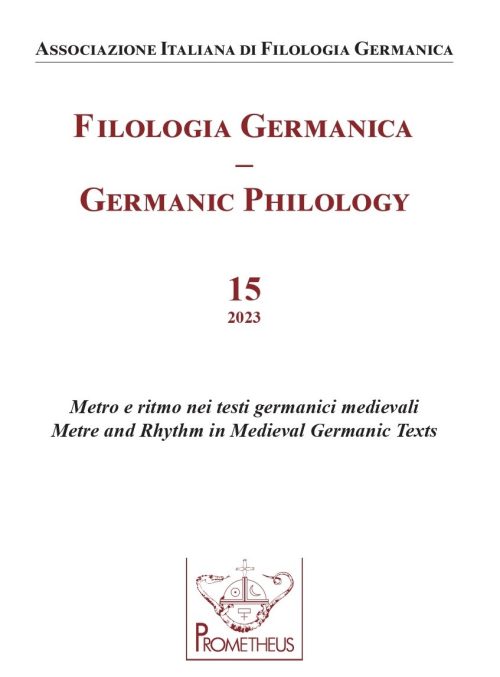Atlakviða, reversal, and theories of Germanic alliterative metre
DOI:
https://doi.org/10.14672/fg.v15i.2425Parole chiave:
Atlakviða, Norse prose, Germanic metrical theoryAbstract
The Norse poem Atlakviða shows an irregular metre which is difficult to classify. This makes it a useful test case for comparing the explanatory abilities of two major theoretical frameworks of Germanic alliterative verse: the positional theory and the word-foot theory. I argue that the word-foot theory is more successful, especially in deriving the “E*” pattern (such as róg-malmi skatna ‘strife-metal of princes’, 27.6) from the D* pattern that is unusually frequent in this poem. This exemplifies the utility of the word-foot theory’s principle of “reversal”, which holds that longer metrical feet should come later in the verse, and that when they occur earlier, this is a marked reversal of the norm. The marked nature of reversed verses can further be supported by the linguistic behaviour of compounds in Norse prose. The word-foot theory is also able to accommodate the shorter verses of the poem as long as they avoid entirely overlapping with full verse patterns. Although this investigation can hardly be the last word in Germanic metrical theory, it suggests that the word-foot theory is more promising as an explanatory framework for the full range of Germanic alliterative metres.
Pubblicato
Fascicolo
Sezione
Licenza

Questo lavoro è fornito con la licenza Creative Commons Attribuzione - Condividi allo stesso modo 4.0.
CC-BY-SA



